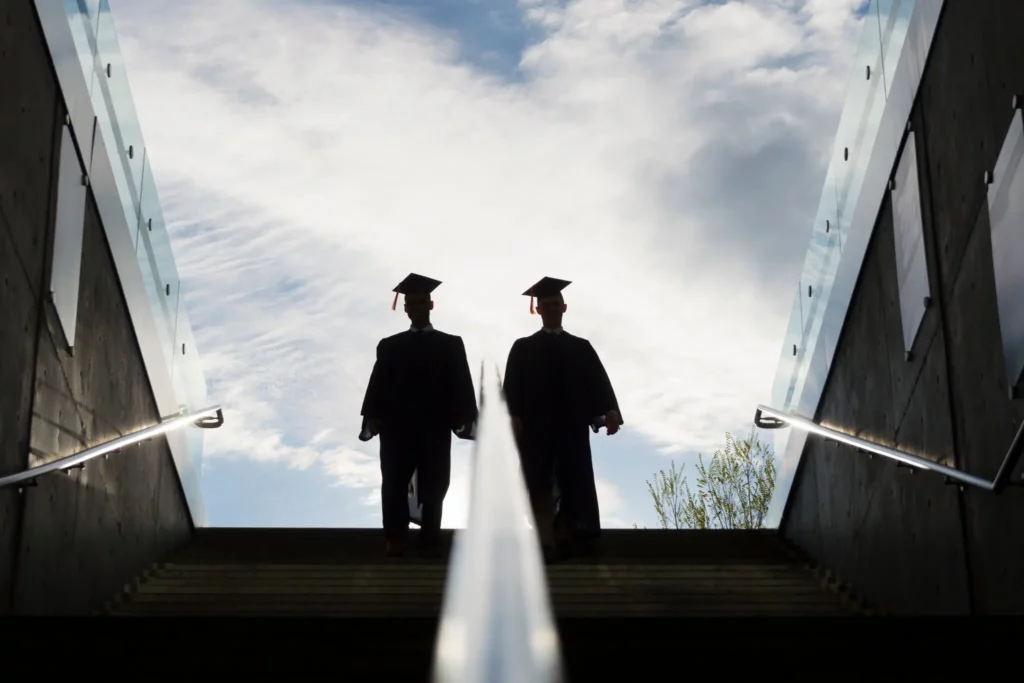Opinion: Trump’s Justices Didn’t Doom Affirmative Action. Demography Did.

If the Supreme Court rules this term that affirmative action is unconstitutional, relying on a case called Students for Fair Admissions v. Harvard, one response will be to chalk it up to the changed composition of the court. After Donald Trump added three justices, legal arguments that had repeatedly failed to convince justices over 45 years of constitutional wrangling suddenly fell on more sympathetic ears.
That view may be true in part. But it’s inadequate to describe why affirmative action is in danger. Affirmative action is on a shaky footing not just because the composition of the court has changed but also because the composition of the country has changed. Demography has caused the moral ground to fall out from under the policy.
Affirmative action dates from executive orders issued by Presidents John F. Kennedy and Lyndon Johnson in the 1960s. The policy was meant to help Black people at a time when the country was effectively biracial, with white people outnumbering Black people by a ratio of about seven to one.
Those facts were directly relevant to the logic of the policy. Giving a break to a few Black students might have meant denying a chance to the equivalent number of white students. But because white people constituted an overwhelming majority, the number of white applicants disadvantaged by affirmative action was relatively low. They tended to be borderline admissions cases. They were hard to identify with any specificity. And advantages were being redistributed from descendants of the former oppressor race (white people) to descendants of the former oppressed race (Black people). In a literal sense, it was discrimination — but it did not necessarily feel like discrimination.
That has changed. The arrival of large numbers of immigrants over the past half-century has upset the logic of affirmative action in several ways. For one thing, white Americans no longer dominate the educational system. (They make up only 22 percent of the Stanford class of 2026, for instance.) Early on, affirmative action was also extended to Latinos, whose numbers continue to grow. In addition, African and Caribbean immigrants and their children now account for more than 40 percent of the Black enrollment in the Ivy League, which risks crowding out the people that affirmative action was originally intended to help.
More than any other development, though, the enormous rise in Asian immigration since the Immigration and Nationality Act of 1965 has complicated the administration of affirmative action. The complication, simply put, is that Asian students, on average, have been considerably more qualified for college than students of other groups.
Students for Fair Admissions, the plaintiffs in one of two affirmative action cases before the Supreme Court, contend that Harvard’s affirmative action programs discriminate against Asian students. These plaintiffs are not the first to make such a claim. In 1988 the Department of Education investigated Harvard for anti-Asian bias. Although the school was absolved, Harvard’s Asian enrollment shot up in the course of the investigation from about 11 percent in 1988 to 16 percent in the early 1990s — “not coincidentally,” according to an amicus curiae brief submitted in support of the plaintiffs in the current Harvard case.
Over the ensuing quarter-century, this increase more or less stalled. Harvard’s Asian enrollment remained at about 17 percent, year after year, while the percentage of Asians in the population of the United States roughly doubled, to 6 percent. By comparison, between 1990 and 2020 the Black percentage of the population increased slightly, the white percentage decreased, and the Hispanic percentage doubled, according to the Brookings Institution demographer William Frey.
Since its 1978 ruling in Regents of the University of California v. Bakke, the Supreme Court has permitted universities to use student-body diversity as a criterion for admissions. But it does not give universities carte blanche to discriminate. Students for Fair Admissions presents evidence (which Harvard disputes) that Asian enrollment stalled because Harvard tweaked its admissions system to keep Asian students out. Citing internal Harvard documents, Students for Fair Admissions argues that if Harvard pursued a neutral admissions policy focused on academics alone, its incoming classes might have been more than half Asian.
Harvard did a number of things with Asian applicants differently from other applicants, including extending invitations to apply at a higher minimum combined SAT score than it did for Black, white and Hispanic students. A Black applicant in the seventh-highest academic decile of applicants had a better chance of being admitted to Harvard than did an Asian applicant in the highest decile.
One particularly suspicious race-based difference in the way Harvard treated its aspiring students involved a so-called personal rating. Harvard’s admission officers assigned to each applicant a numerical score for intangible traits, including leadership, self-confidence, likability and kindness. On these ratings, Asians scored far lower than any other racial group. A federal court accepted Harvard’s assurances that it had not engaged in conscious bias. But there is, at the very least, one strong indication of a systemic bias: Unlike the admissions officers, alumni interviewers from outside the admissions office who met with Asian applicants recorded no such deficiency of personality and character.
In the early days of affirmative action, the trade-offs in weighted admissions were relatively small, and the affected parties were hard to identify, but in today’s admissions systems all racial groups’ relative outcomes are scrupulously tallied, and all trade-offs among groups are conspicuous. The claim of Students for Fair Admissions is that significant numbers of Asians are being lopped off admissions rolls to serve the goals of racial balancing, securing admissions for Black, Latino and probably also white students.
If class size is fixed, using the race of one candidate as a plus to achieve a more diverse class by definition means using the race of another candidate as a minus. In that sense, the constitutional question at the heart of affirmative action may seem no different today from what it was in 1978, in the Bakke case.
But something is different. When majorities discriminate against their own kind, as largely white universities did in the early days of affirmative action, it may not feel like a bad kind of discrimination. It may not feel like discrimination at all. It may even feel like magnanimity. But the biracial historical context that used to tug at consciences, pushing admissions officers (and the parents of rejected students) to a more indulgent understanding of affirmative action, is gone.
After half a century of high immigration, the United States has become a multiracial country, and affirmative action has turned into a different kind of program. Building diverse student bodies now requires treating Asian overrepresentation as a problem to be solved. This means discriminating by race in a way that is radically more direct and intrusive.
Whether or not the Supreme Court decides that the constitutional meaning of affirmative action has changed, it is a policy pursued at an ever-rising social and moral cost.
Read the full piece from the New York Times here.
